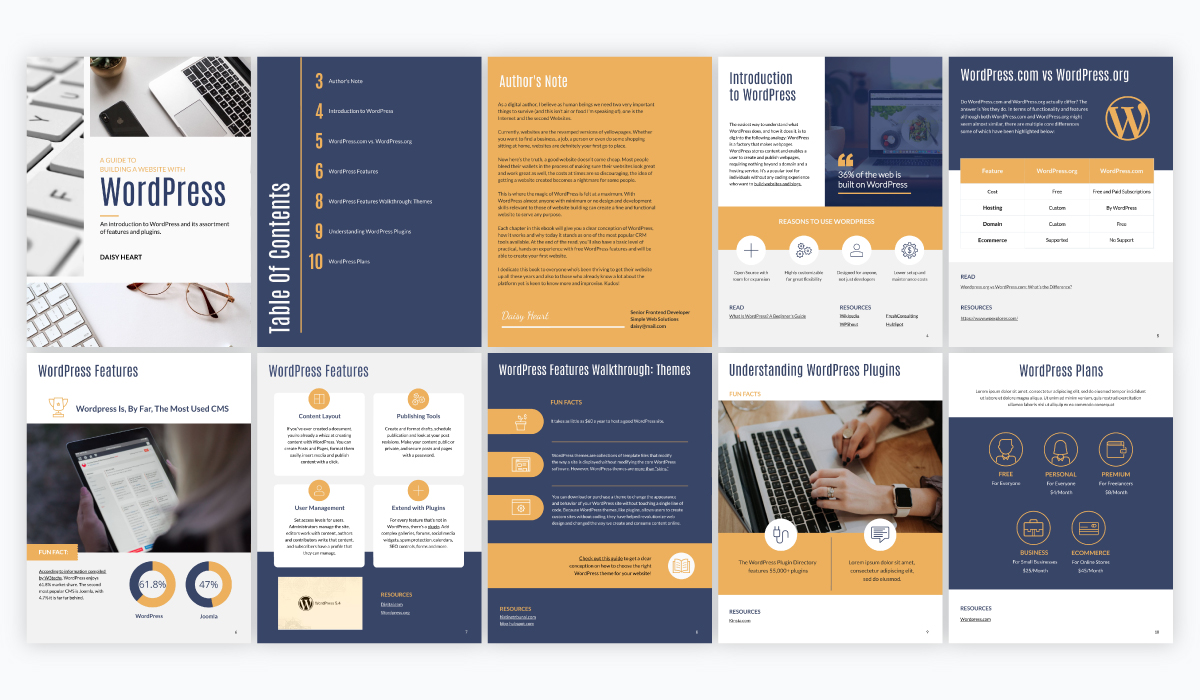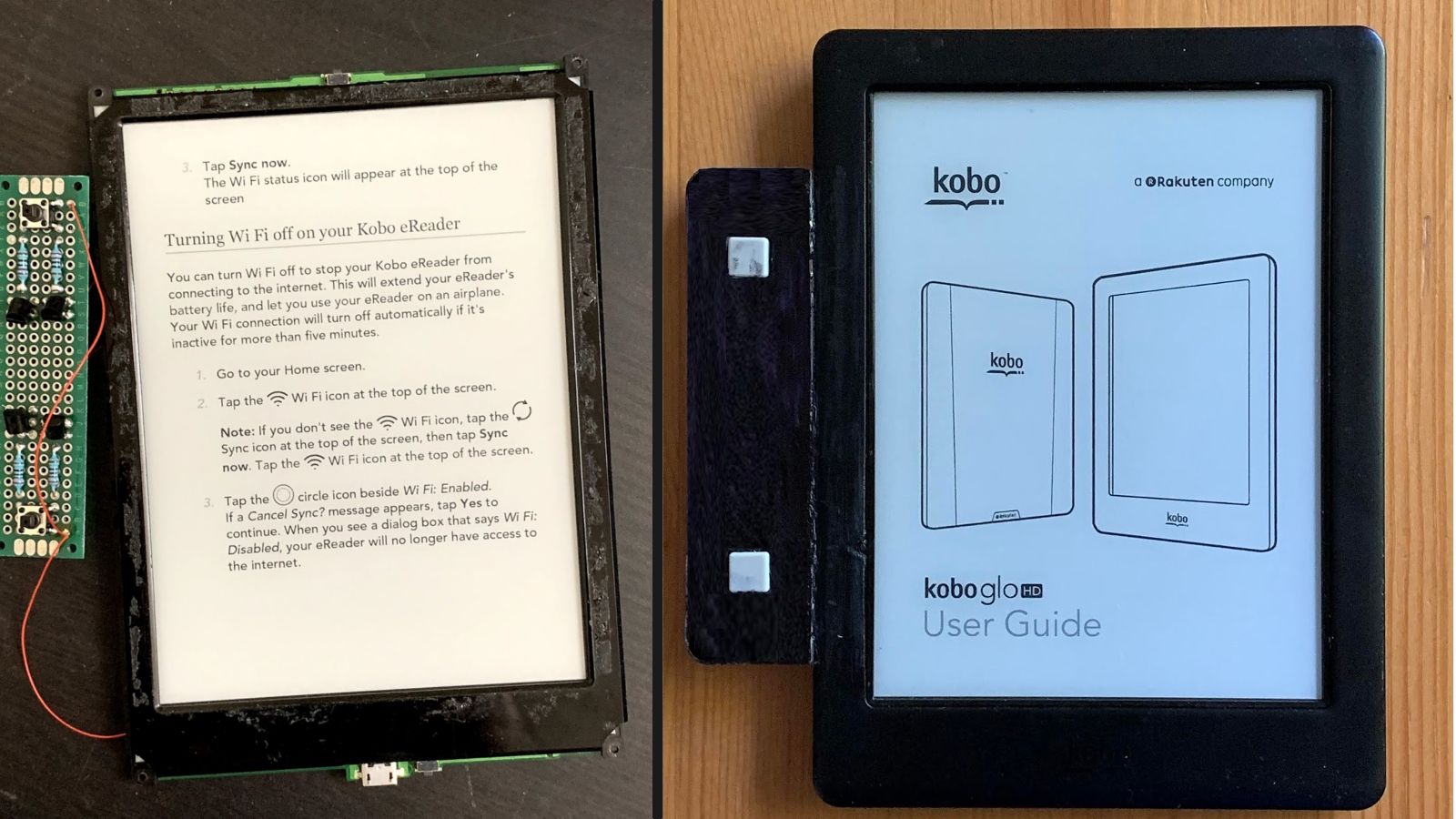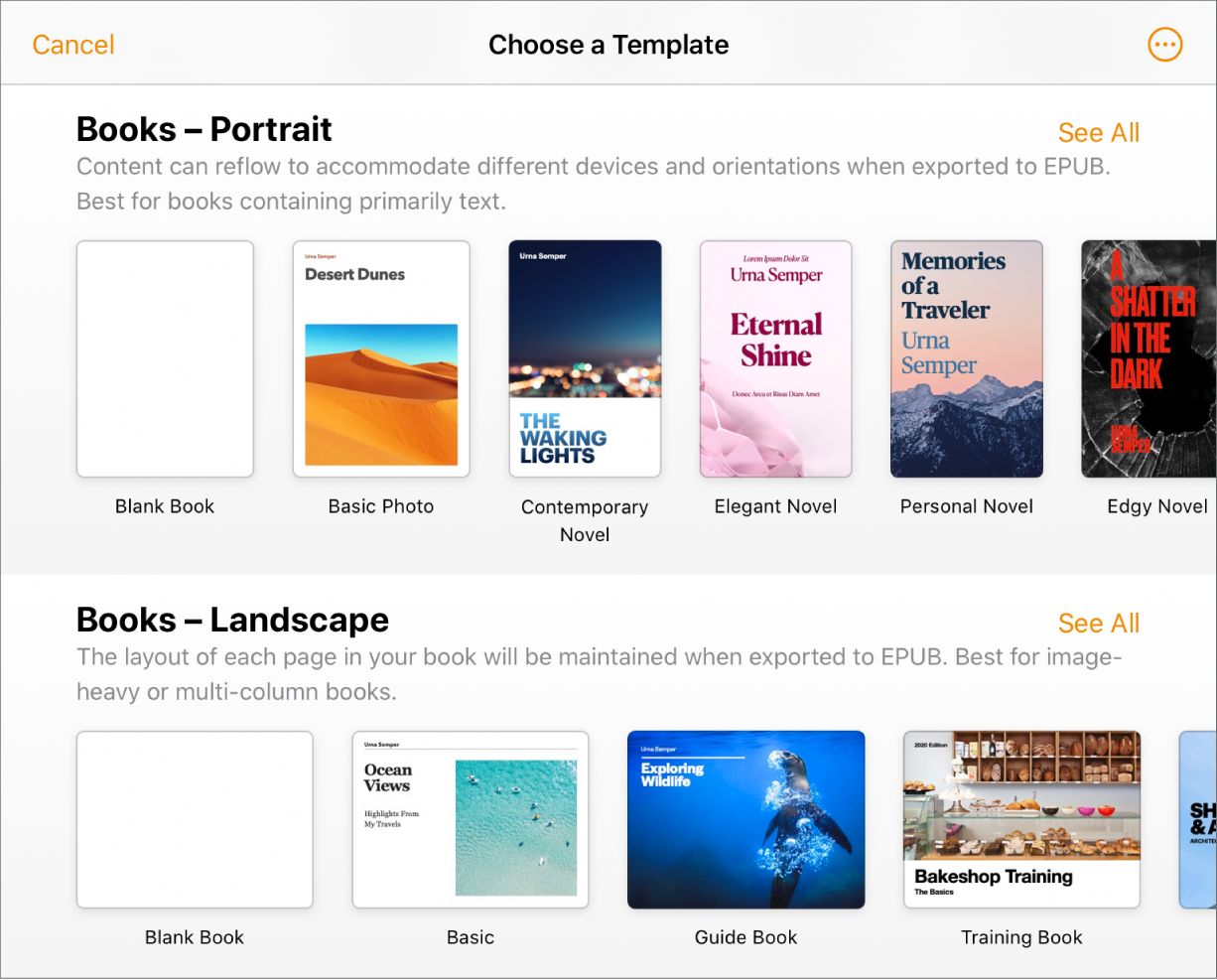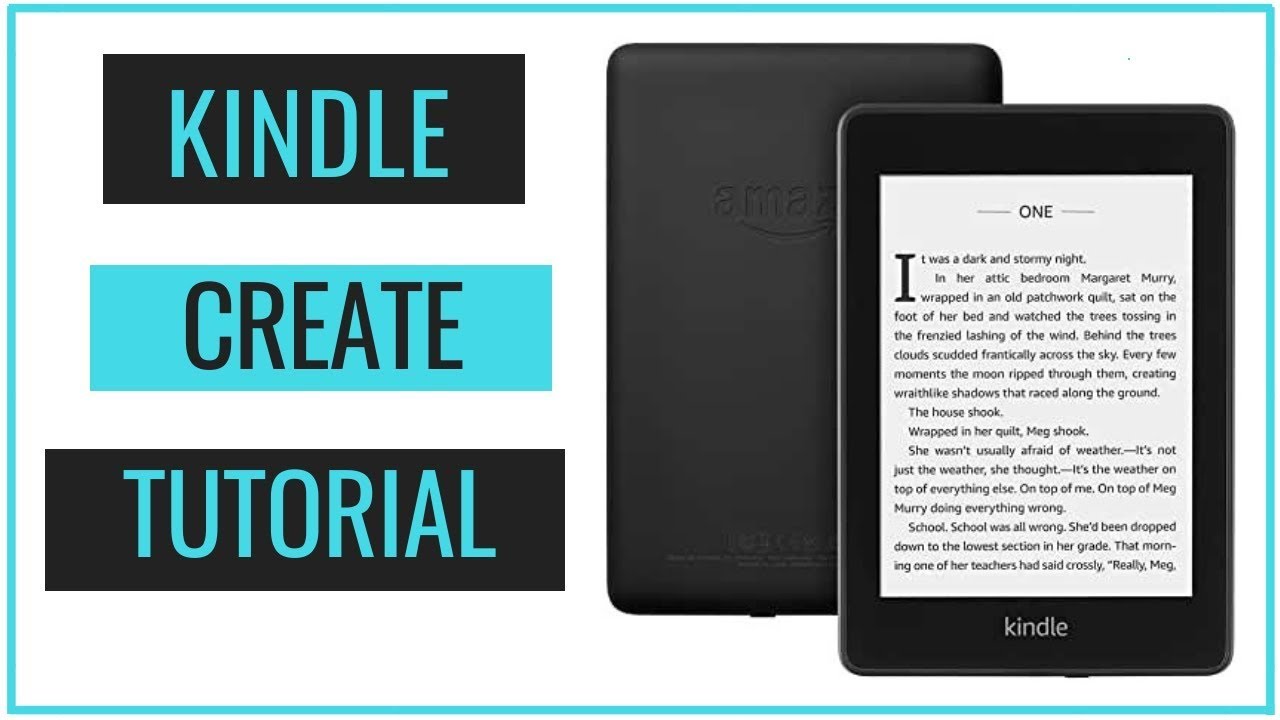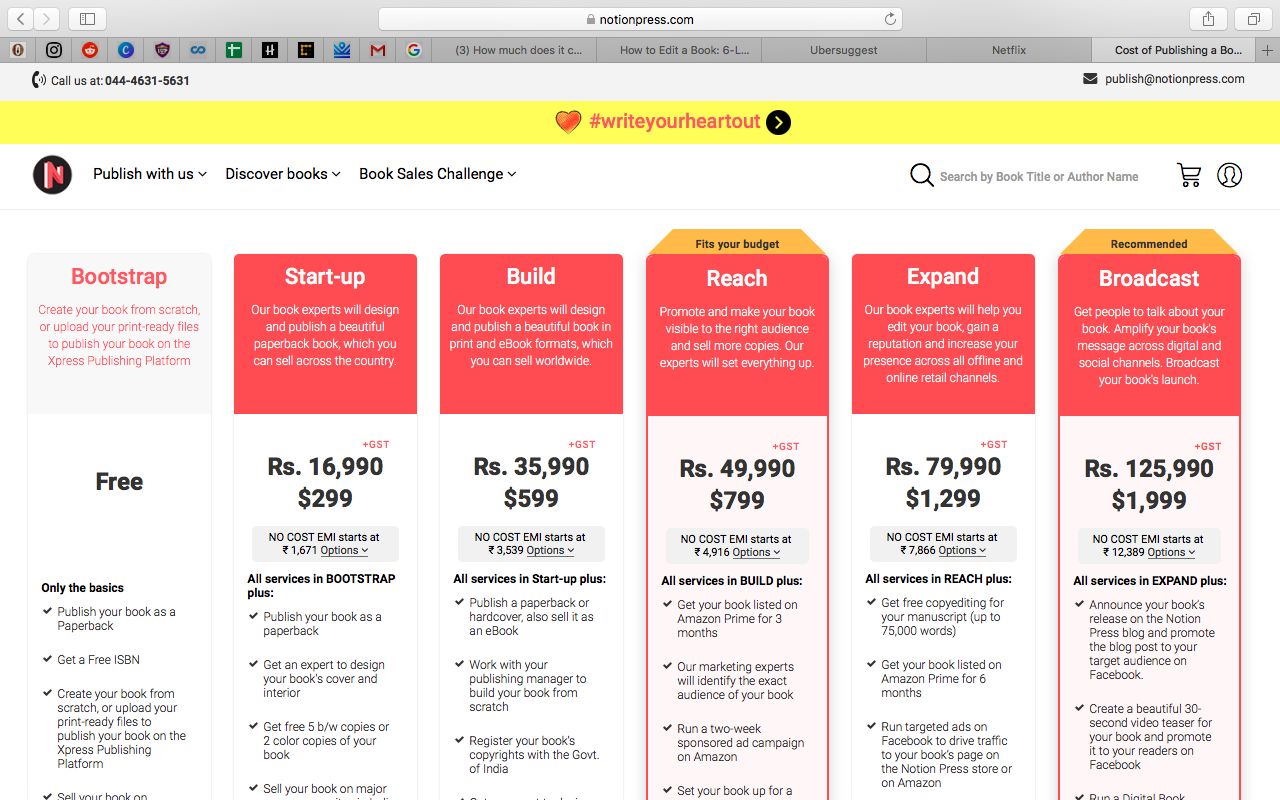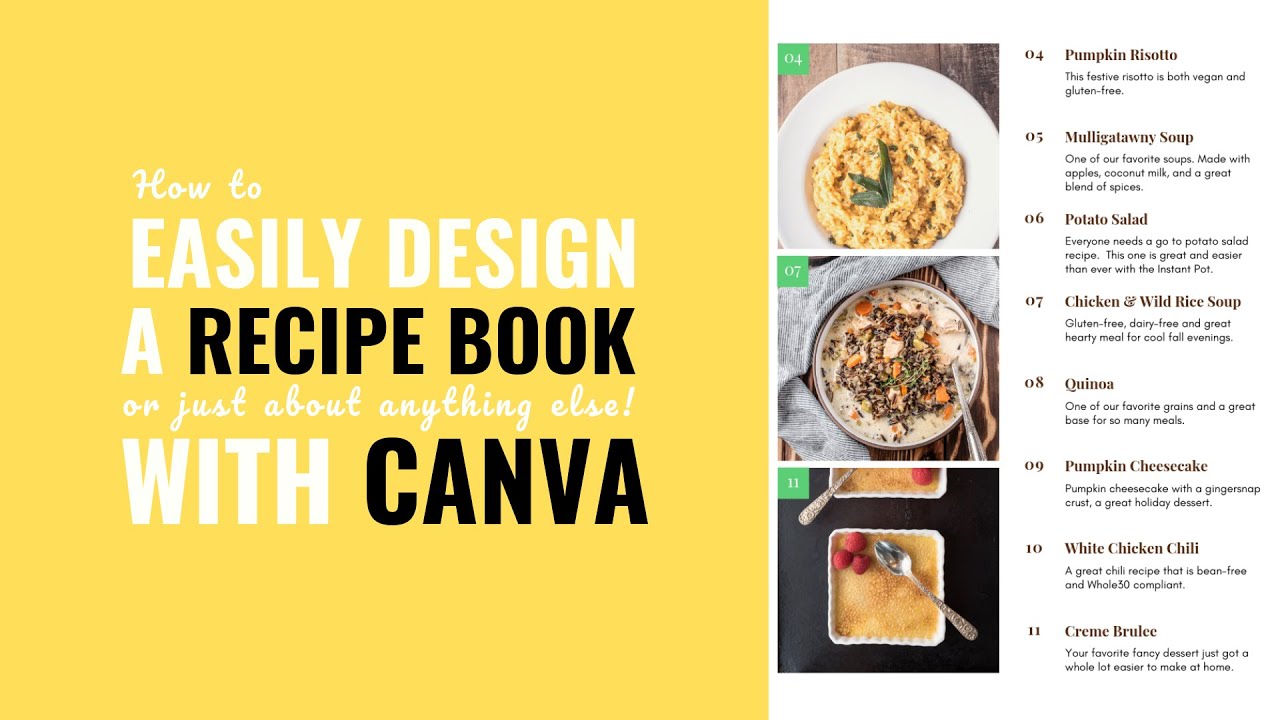Introduction
Welcome to the world of eBook design! In today’s digital age, eBooks have become a popular format for sharing information, stories, and knowledge. Whether you’re an author, a marketer, or a business owner, knowing how to design an eBook can be a valuable skill.
When it comes to eBook design, the goal is to create a visually appealing and engaging reading experience for your audience. A well-designed eBook not only enhances the content but also establishes credibility and professionalism. Whether you’re designing an eBook for a specific purpose, such as lead generation or educational purposes, or simply want to self-publish your work, following a systematic approach will ensure a high-quality result.
In this article, we will guide you through the step-by-step process of designing an eBook, from planning to publishing. You will learn about the essential elements of eBook design, including cover design, formatting, layout, and typography. By the end of this guide, you’ll have the knowledge and confidence to create visually stunning eBooks that captivate your readers.
While there are various software programs available for eBook design, the principles and techniques we will discuss can be applied to any platform. Whether you’re using Adobe InDesign, Microsoft Word, or any other tool, understanding the fundamental aspects of eBook design will greatly benefit your project.
So, if you’re ready to embark on this creative journey, let’s dive into the world of eBook design and explore the essential steps that will help you design a professional and captivating eBook.
Step 1: Plan Your eBook
Before diving into the actual design process, it’s crucial to have a solid plan in place for your eBook. Proper planning helps you stay organized, maintain focus, and ensure a seamless flow of content. Here are some key factors to consider when planning your eBook:
- Define your purpose: Clearly identify the purpose of your eBook. Are you creating it to educate, entertain, or promote a product? Understanding your objectives will help you determine the tone, style, and content of your eBook.
- Identify your target audience: Determine who your target audience is. Consider their demographics, interests, and needs. This information will inform your design choices, such as color schemes, imagery, and layout.
- Outline your content: Create a detailed outline of your eBook’s chapters and sections. This will give you a clear structure to follow and ensure that your content flows logically from one topic to another.
- Gather your resources: Determine the resources you’ll need for your eBook, such as research materials, images, and graphics. Collect and organize these resources beforehand to streamline the design process.
- Design a wireframe or storyboard: Sketch out a rough wireframe or storyboard of how you envision the layout of your eBook. This visual representation will help you visualize the overall structure and placement of content.
- Set a timeline: Establish a realistic timeline for your eBook design project. Consider factors such as research, writing, editing, design, and publishing. Setting deadlines will help you stay on track and ensure timely completion.
By carefully planning your eBook, you lay a strong foundation for the design process. This step allows you to clarify your goals, understand your audience, and organize your content effectively. So take the time to plan and strategize before moving forward to the next steps of eBook design.
Step 2: Choose the Right Software
Choosing the right software is essential for creating a professional and visually appealing eBook. The software you select will determine your design options, flexibility, and ease of use. Here are a few factors to consider when choosing eBook design software:
- Design capabilities: Look for software that offers a wide range of design features and options. This includes the ability to customize layouts, fonts, colors, and graphics. Consider whether the software allows you to create interactive elements like hyperlinks, embedded videos, or audio.
- User-friendly interface: Opt for software with an intuitive and user-friendly interface. Designing an eBook can be a complex process, so having a software program that is easy to navigate and understand will save you time and frustration.
- Compatibility: Ensure that the software is compatible with the file format you plan to publish your eBook in, such as PDF, EPUB, or MOBI. Compatibility is crucial to ensure that your eBook can be accessed and viewed correctly on various devices.
- Customer support: Check if the software provider offers good customer support. This can be in the form of live chat, email support, or a knowledge base. Having reliable customer support can help you overcome any technical difficulties or design challenges during the eBook creation process.
- Cost: Consider your budget when choosing eBook design software. Some software programs offer free or low-cost options, while others may require a subscription or one-time purchase. Evaluate the features and benefits of each software option and choose one that best suits your needs and budget.
There are several popular software options available for eBook design, including Adobe InDesign, Microsoft Word, Apple Pages, and Canva. Each has its own set of features, capabilities, and learning curves. Take the time to explore and experiment with different software programs to find the one that aligns with your design goals and preferences.
An important note: Regardless of the software you choose, always ensure that your eBook is properly formatted and complies with industry standards. Test your eBook on different devices and platforms to ensure that it displays correctly and functions as intended.
By selecting the right software for your eBook design project, you’ll have the tools and capabilities necessary to create a visually stunning and professional eBook.
Step 3: Design a Professional Cover
The saying “Don’t judge a book by its cover” doesn’t apply to eBooks. The cover is the first thing that potential readers see, and it plays a crucial role in grabbing their attention and enticing them to explore further. Here are some tips to design a professional and eye-catching cover for your eBook:
- Capture the essence: Your eBook cover should convey the essence of your content and visually represent what readers can expect. Consider the genre, tone, and theme of your eBook and create a design that aligns with these elements.
- Choose a compelling image: Select a high-quality image that is relevant to your eBook’s topic or theme. The image should be visually appealing, attention-grabbing, and evoke curiosity. You can use stock photos, hire a designer, or create your own custom artwork.
- Create a strong title: Craft a captivating title that communicates the core message of your eBook. Use fonts, colors, and styling that are both visually appealing and readable. Experiment with different combinations to find the perfect balance between creativity and legibility.
- Add an author name and branding: Include your name or pen name prominently on the cover to establish your author brand. Consistency in font style and color with your other branding elements, such as your website or social media, will help strengthen your brand identity.
- Balance design elements: Ensure a balanced composition by strategically placing the title, image, and other design elements on the cover. Avoid overcrowding or clutter by keeping the design clean and uncluttered. Use visual hierarchy techniques, such as font size, color, or placement, to guide the reader’s eyes.
- Consider your target audience: Research the preferences and expectations of your target audience when it comes to eBook covers. Look at covers of successful books in your genre and take note of design trends. This will help you create a cover that resonates with your readers and stands out from the competition.
Remember, your eBook cover is a visual representation of your content and your brand. It’s the first impression readers will have, so invest time and effort into creating a professional and appealing cover design. If graphic design isn’t your forte, consider hiring a professional designer who specializes in eBook covers to ensure a polished and visually striking result.
Once you’ve designed the perfect cover, test it across different devices and platforms to ensure it displays correctly. Your eBook cover should be visually compelling, easily recognizable, and make a positive first impression on potential readers.
Step 5: Format the Text
Formatting the text in your eBook is essential for creating a visually appealing and readable experience for your readers. Proper formatting ensures that your content is presented in a clear and organized manner. Here are some key considerations when formatting the text in your eBook:
- Choose the right font: Select a font that is easy to read on screens of various sizes. Sans-serif fonts like Arial or Helvetica are often preferred for digital content. Consider the readability, style, and appropriateness for your eBook’s genre or theme.
- Adjust font size and spacing: Strive for a font size and line spacing that is comfortable for reading. Avoid making the font too small, as it can strain the reader’s eyes. Experiment with different combinations until you find the right balance between legibility and aesthetics.
- Use headings and subheadings: Organize your content using headings and subheadings to create a logical structure. This helps readers navigate through your eBook and find specific sections or topics easily. Make headings stand out by using larger font sizes, bold or italic styles, or different colors.
- Implement consistent styling: Maintain consistency in your text formatting throughout the eBook. Use consistent font styles, sizes, and colors for headings, body text, quotes, and captions. This creates a cohesive and professional look.
- Break up the text: Long blocks of text can be overwhelming for readers. Break up paragraphs into shorter ones for easier reading. Use bullet points, numbered lists, or indents to highlight important information or create visual interest.
- Consider the use of imagery: Incorporate relevant images, charts, or graphs to enhance your text. Ensure these visual elements are properly aligned and sized for optimal readability. Use captions or annotations to provide context or additional information.
- Incorporate interactive elements: Depending on the format of your eBook, consider adding interactive elements such as hyperlinks, clickable buttons, or interactive quizzes. These elements engage readers and make the reading experience more interactive and dynamic.
While formatting your text, keep in mind that simplicity and readability are key. Avoid using excessive formatting, such as excessive bold or italic text, as it can distract and overwhelm readers. Strike a balance between visual appeal and clarity of content.
Before finalizing your eBook, preview it on different devices and screen sizes to ensure that the formatting remains consistent and readable. This will ensure a positive reading experience for your audience and enhance the overall quality of your eBook.
Step 6: Add Images, Charts, and Graphs
Visual elements such as images, charts, and graphs can enhance the content of your eBook, making it more engaging and informative. They can help illustrate concepts, break up the text, and provide visual interest. Here are some guidelines for incorporating visual elements into your eBook:
- Choose high-quality visuals: Use high-resolution images, charts, and graphs that are relevant to your content. Low-quality or pixelated visuals can detract from the overall professionalism of your eBook. If necessary, consider hiring a designer or using stock photo resources to obtain high-quality visuals.
- Ensure appropriate sizing: Resize visuals to fit well within your eBook’s pages. Avoid stretching or distorting images, as this can compromise their clarity and visual appeal. Adjust the size and placement of the visual elements to create a balanced composition with the accompanying text.
- Provide captions and annotations: Include descriptive captions or annotations for your visuals. Captions help provide context and clarify the purpose of the visual elements, while annotations can explain specific details or highlight important points within the visuals.
- Use charts and graphs effectively: Utilize charts and graphs to present complex data or statistics in a visually comprehensible manner. Choose appropriate chart types, such as bar graphs, pie charts, or line graphs, based on the type of data you’re presenting. Label the axes and provide clear legends to enable readers to understand the information easily.
- Integrate visuals with the text: Place the visual elements strategically within the eBook, aligning them with the related text. This ensures that readers can easily associate the visuals with the corresponding content and improves the overall flow of information.
- Ensure accessibility: Consider the accessibility of your visuals. Provide alt text for images, so that visually impaired readers using screen readers can understand the content. Use descriptive file names when uploading the visuals to improve accessibility for users with vision impairments.
- Maintain consistency: Maintain a consistent visual style throughout your eBook. Use a cohesive color scheme, font styles, and formatting for all visuals, ensuring they align with the overall design and theme of your eBook.
Remember, the goal is to enhance the understanding and engagement of your readers through the visual elements you incorporate. Be selective with the visuals you choose, ensuring that they add value to your content rather than creating distractions or confusion.
Before finalizing your eBook, review the visuals in the context of the complete layout. Ensure they are well-integrated, properly labeled, and do not disrupt the reading experience. Visuals should serve as valuable supplements to your written content, helping convey your message effectively.
Step 7: Incorporate Visual Elements
Incorporating visual elements in your eBook can greatly enhance the overall design and reader experience. Visual elements such as icons, illustrations, infographics, and borders can add visual interest and make your eBook more engaging. Here are some tips for effectively incorporating visual elements:
- Use icons and illustrations: Icons and illustrations can be used to represent ideas or concepts visually. They can help break up the text, add visual appeal, and make information more memorable. Choose icons and illustrations that align with your eBook’s content and style.
- Create infographics: Infographics are a powerful way to present complex information or data in a visually appealing format. Use charts, graphs, icons, and illustrations to create infographics that display information in a concise, easy-to-understand manner. Be sure to provide clear labels and explanations to enhance comprehension.
- Add borders and separators: Borders and separators can be used to visually divide sections or chapters in your eBook. They create a clear distinction between different topics and help improve readability. Choose borders and separators that complement the overall design and maintain consistency throughout the eBook.
- Experiment with color: Color can greatly influence the mood and visual impact of your eBook. Use colors strategically to highlight important elements, create contrast, or evoke certain emotions. Be mindful of color psychology and consider the preferences and expectations of your target audience.
- Consider typography effects: Typography plays a crucial role in the visual appeal of your eBook. Experiment with different font styles, weights, sizes, and spacing to create visual interest and hierarchy. However, ensure that the chosen typography remains readable and doesn’t compromise the overall legibility of your content.
- Balance visual elements: Maintain a sense of balance and consistency when incorporating visual elements. Avoid overcrowding your eBook with too many visuals or overwhelming the reader with excessive decorations. Each visual element should serve a purpose and contribute to the overall design and understanding of the content.
Remember, the visual elements you incorporate should enhance the reading experience and support the messages you want to convey. Ensure that the visuals align with your overall design vision and reinforce the themes and tone of your eBook. Regularly review and assess the visual elements to ensure they are cohesive and have a positive impact on the reader.
Before finalizing your eBook, consider testing it on various devices and platforms to ensure that the visual elements appear as intended and do not negatively affect the readability or functionality of your eBook.
Step 8: Use Fonts and Typography Effectively
Fonts and typography play a vital role in eBook design as they contribute to the overall aesthetic appeal and readability of your content. By using fonts effectively, you can enhance the visual impact of your eBook and create a seamless reading experience for your audience. Here are some guidelines for using fonts and typography effectively:
- Select appropriate fonts: Choose fonts that are legible and suitable for digital reading. Sans-serif fonts like Arial or Helvetica are commonly used for body text as they offer better readability on screens. Reserve decorative or script fonts for titles or headings, while keeping them easily readable.
- Consider font pairing: Opt for font pairings that complement each other and create contrast. Pairing a serif font with a sans-serif font can add visual interest and help differentiate headings from body text. Ensure that the selected fonts are in harmony with the overall design and convey the desired tone.
- Size for readability: Use font sizes that are comfortable for reading. Avoid making the text too small, as it may strain the reader’s eyes. Consider the medium on which your eBook will be read and adjust the font size accordingly to ensure optimal readability.
- Utilize font styles: Make use of font styles such as bold, italic, or underline to emphasize key points or titles. However, exercise caution not to overuse these styles as they may distract or clutter the text. Reserve their use for adding emphasis or distinguishing specific sections within your eBook.
- Ensure proper spacing: Pay attention to line spacing and letter spacing to improve readability. Ample line spacing (leading) between lines of text helps prevent the text from appearing cluttered, while letter spacing (tracking) can enhance legibility. Experiment with different options to find the ideal balance for your eBook.
- Use hierarchy and formatting: Create a clear hierarchy within your typography by varying the font size, weight, or style for headings, subheadings, and body text. This helps readers navigate through your eBook more easily and understand the structure of your content at a glance.
- Consider readability on different devices: Ensure that your chosen fonts are readable on various devices and screen sizes. Test your eBook on different devices to ensure that the fonts retain their legibility and visual appeal. Avoid using highly decorative or intricate fonts that may become difficult to read on smaller screens.
By using fonts and typography effectively, you can enhance the visual appeal, legibility, and overall reading experience of your eBook. Experiment with different font combinations, sizes, spacing, and styles to find the perfect balance that aligns with your eBook’s theme and target audience.
Before finalizing your eBook, proofread the text to ensure that fonts, styles, and formatting are consistent throughout. This ensures that your eBook appears professional and polished, leaving a positive impression on your readers.
Step 9: Check for Consistency and Readability
As you near the completion of your eBook design, it’s crucial to review and ensure consistency and readability throughout. Consistency ensures a cohesive and professional look, while readability ensures that your audience can easily consume and understand your content. Here are some essential aspects to consider when checking for consistency and readability:
- Consistent styling: Verify that your eBook maintains consistent styling throughout. This includes formatting, font usage, color schemes, and visual elements. A visually consistent eBook enhances the reading experience and creates a sense of professionalism.
- Proofread for errors: Thoroughly proofread your text, checking for grammar, spelling, and punctuation errors. Mistakes can disrupt the reading flow and undermine the credibility of your eBook. Consider using proofreading tools or seeking a second pair of eyes for a fresh perspective.
- Ensure consistent formatting: Regularly check formatting, such as paragraph indentations, line spacing, margins, and alignment. Inconsistencies can make your eBook appear unprofessional and disrupt the reading experience. Make necessary adjustments to maintain a clean and organized layout.
- Check for readability: Read through your eBook from a reader’s perspective to assess readability. Ensure that the text is easy to follow, understand, and digest. Break up long paragraphs, use headings to organize content, and incorporate white space to improve readability.
- Avoid excessive repetition: Keep an eye out for repetitive statements, phrases, or concepts. Repetition can bore readers and make your eBook appear unfocused. Edit and rephrase content to ensure clarity and maintain reader engagement throughout.
- Consistent use of terminology: Use language consistently throughout your eBook. Ensure that terminology, abbreviations, and acronyms are used consistently and defined when necessary. Inconsistencies can confuse readers or lead to misunderstandings.
- Test on various devices: Test your eBook on different devices, screen sizes, and platforms. Ensure that the formatting, fonts, images, and interactive elements display correctly and are easily accessible. This helps guarantee a consistent user experience across multiple devices.
By carefully reviewing and addressing consistency and readability issues, you can refine your eBook to offer a more polished and enjoyable reading experience. Take the time to make necessary adjustments and ensure that your eBook meets the highest standards of quality and professionalism.
Once you have thoroughly checked for consistency and readability, you are well on your way to completing a well-designed eBook. The final step is to prepare for the export and publishing phase, which we will explore in the next and final step.
Step 10: Export and Publish Your eBook
Congratulations! You have successfully designed and refined your eBook. Now it’s time to prepare for the final step—exporting and publishing your eBook. Here’s what you need to do:
- Choose the appropriate file format: Determine the file format suitable for your eBook. Common eBook formats include PDF, EPUB, and MOBI. Consider your target platform and the compatibility requirements for that format.
- Export with quality in mind: When exporting your eBook, ensure that the quality of images, graphs, and other visual elements remains intact. Double-check that all links, bookmarks, and interactive features function well in the final exported file.
- Validate your HTML encoding: If your eBook contains HTML elements or code, make sure to validate it to ensure it adheres to the HTML specifications. Using online HTML validators can help identify and fix any errors or inconsistencies in your encoding.
- Prepare a professional cover image: Create a high-resolution cover image that aligns with the specifications of the platform or distributor where you will publish your eBook. This cover will serve as the first impression for potential readers.
- Consider DRM protection: Decide whether you want to add Digital Rights Management (DRM) protection to your eBook. DRM protects your content from unauthorized copying or distribution, which can help safeguard your intellectual property.
- Research publishing platforms: Explore different publishing platforms to determine the best fit for your eBook. Consider platforms like Amazon Kindle Direct Publishing, Apple Books, or Smashwords. Each platform has its own publishing requirements and royalty structures.
- Follow publishing guidelines: Carefully review and adhere to the publishing guidelines provided by your chosen platform. Ensure that your eBook meets all the formatting, file size, and metadata requirements specified by the platform.
- Test before publishing: Before publishing, thoroughly test your eBook on various devices and platforms to ensure proper display and functionality. Pay attention to formatting, navigation, and the overall reader experience.
- Publish and promote: Once you’re satisfied with the quality and functionality of your eBook, proceed with publishing it on your chosen platform. Develop a marketing and promotion plan to generate visibility for your eBook, such as utilizing social media, running targeted ads, or reaching out to book reviewers or influencers.
- Monitor and update: After publishing, keep an eye on reviews, sales, and reader feedback. Use this feedback to continuously improve your eBook and make updates as needed.
Remember, publishing your eBook is an exciting step, but it’s important to thoroughly prepare and follow the guidelines to ensure a smooth and successful publishing process. With your eBook now available to readers, continue to promote and share it to maximize its reach and impact.
Conclusion
Congratulations on reaching the end of this comprehensive guide on how to design an eBook! By following the ten essential steps outlined in this article, you have gained valuable insights and practical tips for creating a professional and visually appealing eBook.
Throughout the design process, you have learned the importance of planning, choosing the right software, designing a professional cover, formatting the text, incorporating visual elements effectively, and ensuring consistency and readability. These steps are crucial for creating an engaging and memorable reading experience for your audience.
Remember that designing an eBook is more than just arranging text and images. It’s about balancing aesthetics, functionality, and user experience to deliver a high-quality product. Take the time to experiment, iterate, and continuously improve your eBook design skills.
As you venture into the world of eBook design, keep in mind that trends and technologies may evolve. Stay updated on the latest design practices and keep an eye on emerging digital publishing platforms. Embrace creativity in your approach, break the rules when needed, and let your eBook reflect your unique style and message.
Now, armed with your newfound knowledge, it’s time to put it into action and create your own impressive eBooks. Take your ideas, tell compelling stories, share valuable knowledge, and inspire your readers with well-designed and captivating eBooks.
So go ahead, start planning, designing, and publishing your eBook masterpiece. Your creativity knows no bounds, and the digital world is waiting to embrace your remarkable creations. Happy eBook designing!







